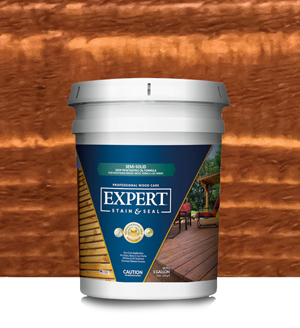Education ·
Spring Tips ·
Spring Into Aeration
What is lawn aeration, and what’s so good about it? We get asked this question a lot at Fence Armor®. Customers think we are only about fence post protection, which we are, but healthy soil is essential too. If the lawn soil suffers from poor care, it can cause a lot of damage to the fence posts.
Lawn Aeration is the movement of air between the soil and the atmosphere. We aerate because the soil compacts, and grass thatches over time. All this limits the air reaching down into the ground and roots, which is why lawn aeration is an annual job. The best times are either the spring or fall when moisture levels and soil temperatures are correct.
There are benefits of lawn aeration, such as:
- Improved airflow to the soil
- An improved flow of water to the soil
- Much needed fertilizer will get into the soil
- You will get stronger and healthier roots
- The lawn will be more resilient through periods of heat and drought
- The roots and soil will absorb more water
- Improves fence post protection
While lawn aeration benefits all gardens, it’s particularly beneficial for lawns with
- Heavy clay-like soil
- Plenty of foot traffic
- That dry out quickly or become spongy when wet
- A lot of sodding or around new homes
- Areas of poor water drainage
- Let’s take a look at how to aerate the lawn and improve its overall growth performance.
Lawn aeration and how to do it easily
Lawn aeration is pretty easy when you know how, which is true of many things in life. After a couple of seasons of aerating, you’ll be an expert and your lawn will be looking great.The first thing is to prepare the lawn a day in advance by getting the water hose into action. Ensure the soil is moist and ready for the aerator. The next day get out the aerator and start the work. Run the aerator over the entire lawn, so every bit of surface gets aerated. You can let the plugs break down naturally or break them down using the back of a rake.
The most effective way of lawn aeration is by removing any half-inch plugs three to four inches deep. Once these holes are filled, you can top-dress the lawn with organic matter such as peat moss, garden compost, or a composted manure.
When you have the aerating and composting done, you can seed the lawn again. This will ensure vigorous growth and will bring life back to those bare patches. With the seeding done, you should give the lawn a good covering of fertilizer.

Which seeding is best?
The right seed is vital for good lawn aeration.Choose a grass seed mix that matches the demands of your lawn. If you require a higher quality seed in the front garden, choose the newer hybrid bluegrass, which will germinate in 35 – 45 days.
The average backyard lawn requires a more tolerant, sturdy grass seed mix of fescues, perennial ryegrass, and bluegrass. This mixture provides a beautiful dense sod with good drought and stress tolerance and an excellent overall appearance.

Getting the pH balance for your soil right
The pH balance of your soil is the key to having a healthy lawn. Get the pH balance wrong, and you could lose up to 70% of your fertilizer. Now that’s a real waste of money that is easily avoidable.
Lawn fertilizers acidify the grass turf every time they are applied. A small change in pH reading can mean big changes to your lawn. A pH reading of five is ten times more acidic than a pH reading of six and is 100 times more acidic than a reading of seven. Those are serious figures to consider.
An ideal pH reading for your lawn should be between 6.5 and 6.9.

What a healthy lawn means for your fence posts
At Fence Armor® we know that a healthy lawn means healthy soil. The firm soil will hold the fence posts in place, with little chance of erosion or drought causing much damage. Lawn aeration is a big part of any fence post protection plan.With the lawn aerated, you can also do a few other tasks around the yard.
You can install Fence Armor® Post Guards to protect against trimmer and weed wacker damage. These American-made galvanized steel shields are easy to attach and stop post damage in its tracks.
Fence Armor® Postsaver Sleeves are also easy to attach for fence post protection at the ground-line level. They will eliminate fence post rot and termite damage. The sleeves come in a variety of sizes, and you can purchase them in singles, packs of ten, or in a roll.
Call us - 888-289-5617
At Fence Armor®, we know about fence post protection. Lawn aeration is one of the tasks you should be doing annually. Make it part of your fence maintenance plan. Call us today with all your fence post protection needs.(Special thanks to the late Bruce Zimmerman of Open-Line Garden Show, receiver of the Queen’s Golden Jubilee Commemorative Medal, and early adapter of Fence Armor® for collaborating with us on this article.)
















